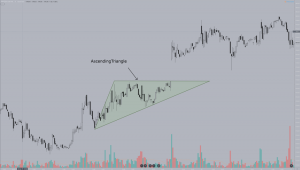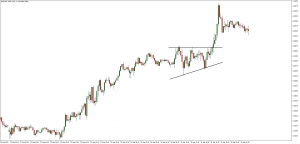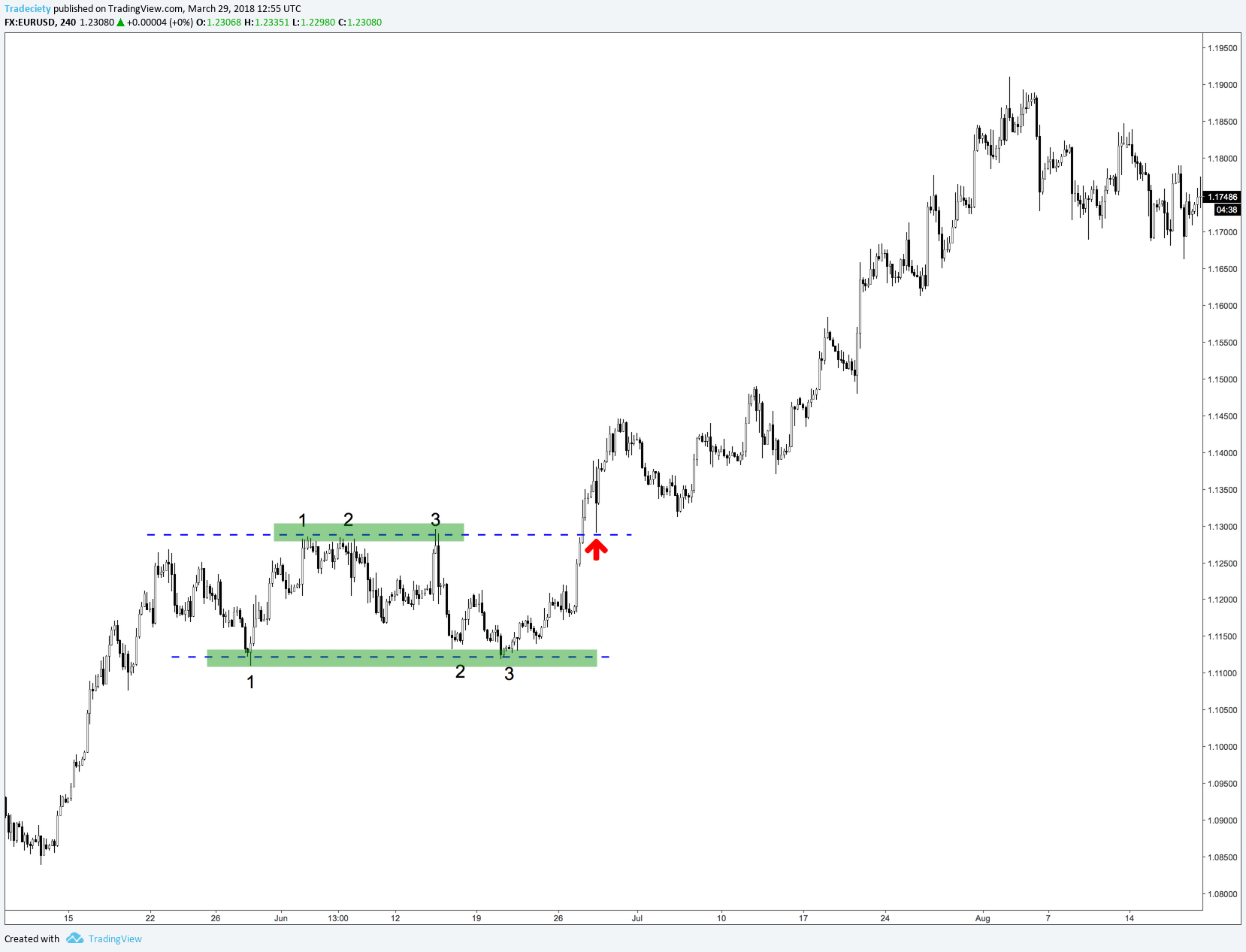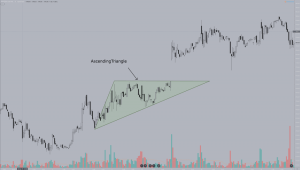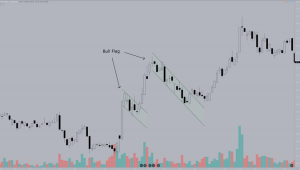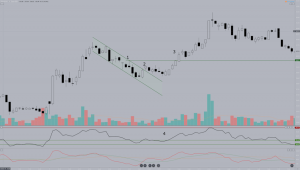
Introduction
The world of day trading is fast-paced and ever-changing, with rules and regulations that can significantly impact a trader’s activity. One such rule is the Pattern Day Trader (PDT) rule, a regulatory requirement imposed by the Financial Industry Regulatory Authority (FINRA) in the United States. Being classified as a pattern day trader can greatly influence your trading approach and the tools at your disposal. Therefore, understanding the PDT rule is crucial for anyone embarking on the day trading journey.
The PDT Rule: What It Entails
In the trading world, one of the most crucial regulations that every trader must be aware of is the Pattern Day Trader (PDT) rule. This rule, set forth by the Financial Industry Regulatory Authority (FINRA), directly influences how a pattern day trader operates and the strategies they can implement. It fundamentally changes the dynamics of how and when a trader can engage in day trading activities.
Diving deeper, the PDT rule specifies that any individual who makes four or more day trades within five business days in a margin account is considered a pattern day trader, given that these trades are more than six percent of their total trading activity for that same five-day period. The intention behind this rule is to mitigate the risks associated with excessive trading, thereby protecting both the trader and the integrity of the market.
However, the PDT rule does more than just label a trader as a pattern day trader. It also requires that any pattern day trader maintain a minimum equity of $25,000 in their brokerage account. This stipulation is in place at all times, not just on days when the trader plans to make trades. If the account’s equity falls below this level, the pattern day trader will not be able to execute any more day trades until the equity is brought back up to the $25,000 mark.
This aspect of the PDT rule significantly impacts the pattern day trader by setting a high barrier for entry into day trading. It can discourage smaller, individual investors from becoming involved in day trading due to the substantial initial capital requirement.
Furthermore, the PDT rule also impacts a pattern day trader‘s access to margin. In accordance with this rule, a pattern day trader can trade up to four times the maintenance margin excess in their account as of the close of business on the previous day. If a day trading call is issued, the pattern day trader will have five business days to meet the call, during which their day trading buying power is limited to two times the maintenance margin excess. If the call is not met within five business days, the account will be restricted to trading on a cash available basis for 90 days or until the call is met.
Understanding Day Trading
Day trading is an active trading strategy that involves buying and selling financial instruments within a single market day. The objective is to take advantage of small price movements in highly liquid stocks or currencies. It’s a strategy favored by many due to its potential for quick returns. However, the speedy nature of day trading, coupled with its high potential for profit, can often be a double-edged sword. This form of trading typically requires deep market knowledge, quick decision-making, and a firm grasp of trading principles.
As a pattern day trader, the complexity of day trading can become even more nuanced. A pattern day trader is a regulatory designation for traders or investors that execute four or more day trades during five business days’ period in a margin account. The Financial Industry Regulatory Authority (FINRA) in the United States enforces the pattern day trader rule, intending to deter over-trading and protect individual investors.
A pattern day trader can engage in day trading activities, providing they maintain a minimum equity of $25,000 in their brokerage account. This requirement is meant to ensure that traders have sufficient capital to handle the risks associated with rapid trading activities. If the equity in a trader’s account falls below this level, they would not be able to day trade until the minimum equity amount is restored.
However, being a pattern day trader also provides some advantages. For instance, a pattern day trader usually has access to more leverage than a regular trader. This increased access to leverage means they can trade more significant amounts than what is available in their accounts, potentially leading to larger profits. But, it’s a double-edged sword as this can also magnify losses.
Finally, a pattern day trader must have a comprehensive understanding of various trading concepts such as technical analysis, chart patterns, and indicators. They must also be able to monitor markets closely and react swiftly to changes. A pattern day trader must have a solid trading plan, excellent risk management skills, and the discipline to stick to their strategy even in high-pressure situations.
How the PDT Rule Impacts Traders
In the fast-paced world of day trading, rules and regulations play an integral role in shaping a trader’s activities, with the Pattern Day Trader (PDT) rule having some of the most profound implications. Being identified as a pattern day trader can significantly impact your trading strategies, available opportunities, and overall trading experience.
For starters, the PDT rule brings about a considerable influence on a trader’s financial commitments. Once an individual is classified as a pattern day trader, they are required to maintain a minimum account balance of $25,000. This equity requirement may seem steep for many traders, especially those who are new to the game or do not have a significant amount of capital at their disposal. The consequence of not meeting this balance is severe, as it bars the trader from making further day trades until the account balance is replenished. This requirement poses a high financial entry barrier, which can dissuade many potential traders.
Apart from the financial aspect, being a pattern day trader can impact the number of trades one can execute within a given period. According to the PDT rule, a pattern day trader is allowed to execute four or more day trades within five business days, granted that the number of day trades is more than six percent of their total trading activities for that same period. This limit on the number of trades is significant. It requires the trader to plan their trades meticulously, selecting only the ones they deem most profitable to fit within this limit.
Moreover, being designated as a pattern day trader can also bring about a change in how a trader interacts with market volatility. Since the PDT rule limits the number of trades a trader can make, it forces the trader to be more selective and cautious in their trade decisions. This selectiveness might lead them to avoid more volatile stocks that could eat into their limited number of trades quickly.
Furthermore, the PDT rule impacts the margin requirements for traders. As a pattern day trader, you are allowed to trade up to four times the maintenance margin excess in your account, as of the close of business on the previous day. This rule offers the potential for significant leveraging, allowing pattern day traders to trade larger positions than their account balance would ordinarily permit. However, the use of this leverage comes with increased risk. If a pattern day trader fails to maintain the required $25,000 balance, a day trading margin call is issued, and their account is restricted to two times the maintenance margin excess for a period of 90 days, or until the call is met.
Strategies to Navigate the PDT Rule
Navigating the PDT rule can seem daunting at first, especially for novice traders. However, with an understanding of the rule and careful planning, a pattern day trader can develop strategies to work within this framework effectively. Below are several approaches a pattern day trader might consider.
Maintaining a Balance Above $25,000
One of the most straightforward strategies to navigate the PDT rule is by always keeping your account balance above the $25,000 threshold. This strategy ensures that even if you qualify as a pattern day trader, you can continue your trading activities without any hindrance.
While this might seem like a steep requirement, especially for beginners, it’s important to remember that day trading is a high-risk endeavor. Having a substantial account balance can act as a buffer against potential losses. Moreover, having more capital at your disposal also means you can diversify your trades, reducing the risk that one bad trade will wipe out your account.
Limiting Day Trading Activities
Another strategy to navigate the PDT rule as a pattern day trader is to limit the number of day trades within a rolling five-day period. By keeping the number of day trades to three or less, you can avoid being classified as a pattern day trader, thus sidestepping the need for a $25,000 account balance.
This approach, however, requires strategic planning and careful trade selection. Instead of making several trades in a day, focus on a few high-quality trades that have the potential for significant returns. This strategy not only helps avoid the PDT classification but also encourages more thoughtful and deliberate trading.
Using a Cash Account
The PDT rule applies only to margin accounts. Therefore, switching to a cash account is another strategy to avoid becoming a pattern day trader. Cash accounts are not subject to the PDT rule. However, keep in mind that trades in a cash account must be paid in full and you can’t sell a security until the trade has settled.
This rule, known as the T+2 rule, means that the trade must settle within two business days. This waiting period could limit the number of trades you can make, but for many, this is a small price to pay for the freedom to trade without the $25,000 minimum requirement.
Becoming a Swing Trader
If the constraints of the PDT rule seem too restrictive, another strategy could be to transition from being a pattern day trader to a swing trader. Swing trading involves holding positions for several days to weeks, aiming to profit from price changes or ‘swings’.
Swing traders are not subject to the PDT rule, as they are not executing four or more trades within five business days. This strategy not only provides more flexibility but also allows more time for trades to unfold, potentially leading to larger profits than day trading.
Alternatives to Day Trading
For the pattern day trader, day trading can be a rewarding, albeit sometimes stressful, way to participate in the stock market. However, it’s not the only trading strategy out there. Whether you’re finding the pace of day trading overwhelming, struggling with the PDT rule, or simply looking for a change, it’s worthwhile to explore alternatives. Here are some of the most popular alternative trading strategies that could be a fit for a pattern day trader seeking something different.
Swing Trading
Swing trading is a medium-term strategy that involves holding positions for several days to several weeks. Unlike the frantic pace of day trading, swing trading is a slower, more measured approach, making it a viable alternative for a pattern day trader. Swing traders aim to capture the gains from the short-term trends in the stock market.
Swing trading involves less time in front of the screen, as trades do not need to be entered and exited within the same day. This makes it an attractive option for traders who cannot dedicate the entire day to the markets. Furthermore, since swing traders do not trade as frequently as day traders, they aren’t as affected by the restrictions placed on pattern day traders.
Long-term Investing
Long-term investing is another strategy that can serve as an alternative to day trading. As the name implies, long-term investing involves buying and holding securities for several years or even decades. The aim is to build wealth slowly over time, capitalizing on the principle of compounding and the general upward trend of the market.
This approach is a stark contrast to the rapid turnover of securities by a pattern day trader. It requires less hands-on management and is not subject to the PDT rule, making it an excellent choice for those who prefer a passive investing strategy. Long-term investing, however, requires patience and the ability to hold onto stocks even during market downturns.
Position Trading
Position trading is a type of trading that falls somewhere between swing trading and long-term investing. Position traders hold onto trades for weeks, months, or even years, aiming to profit from a trend. They rely heavily on trend analysis and fundamental analysis to make their trading decisions.
Just like swing trading and long-term investing, position trading is not subject to the PDT rule. This makes it a viable strategy for a pattern day trader looking to transition to a less frequent trading style.
Potential Changes and Controversies Around the PDT Rule
As with many regulations in the financial industry, the PDT rule has sparked a fair amount of controversy since its inception. The rule, intended as a protective measure, is seen by many as an unnecessary and even prohibitive regulation that places an undue burden on the small, individual pattern day trader.
Critics argue that the PDT rule inherently favors wealthy traders who can effortlessly maintain a minimum balance of $25,000 in their accounts. This disparity creates a barrier to entry for the average individual who might not have such capital at their disposal but wishes to become a pattern day trader.
In contrast, proponents of the rule assert that it serves a critical role in maintaining market stability. They argue that the rule helps protect less experienced or knowledgeable traders from significant losses. As a pattern day trader, the rule is designed to ensure that individuals are sufficiently capitalized to handle the potential risks associated with the high-frequency trading that characterizes day trading.
This division of opinion has led to a significant amount of debate within the trading community and regulatory bodies. Several calls have been made for amendments to the rule that would make it less restrictive. These potential changes include lowering the minimum equity requirement or adjusting the number of trades that qualify someone as a pattern day trader.
Some have even proposed abolishing the rule entirely, suggesting that proper education and transparency about the risks associated with day trading would be a more effective approach to protecting individual traders.
However, until any changes are made, the PDT rule remains in effect, and anyone wishing to pursue a strategy as a pattern day trader must navigate within its parameters.
Consequently, whether one views the PDT rule as an unnecessary barrier or a necessary safeguard, it’s undeniable that it plays a significant role in the landscape of day trading. As such, a comprehensive understanding of this rule and its implications is vital for any aspiring pattern day trader.
Conclusion
Being a pattern day trader comes with unique challenges, primarily due to the PDT rule. Understanding this rule, its implications, and how to navigate it effectively is essential for anyone venturing into the world of day trading. Whether you choose to stick with day trading or explore alternatives like swing trading or long-term investing, a well-thought-out strategy, proper risk management, and an understanding of regulatory requirements are key to successful trading.

